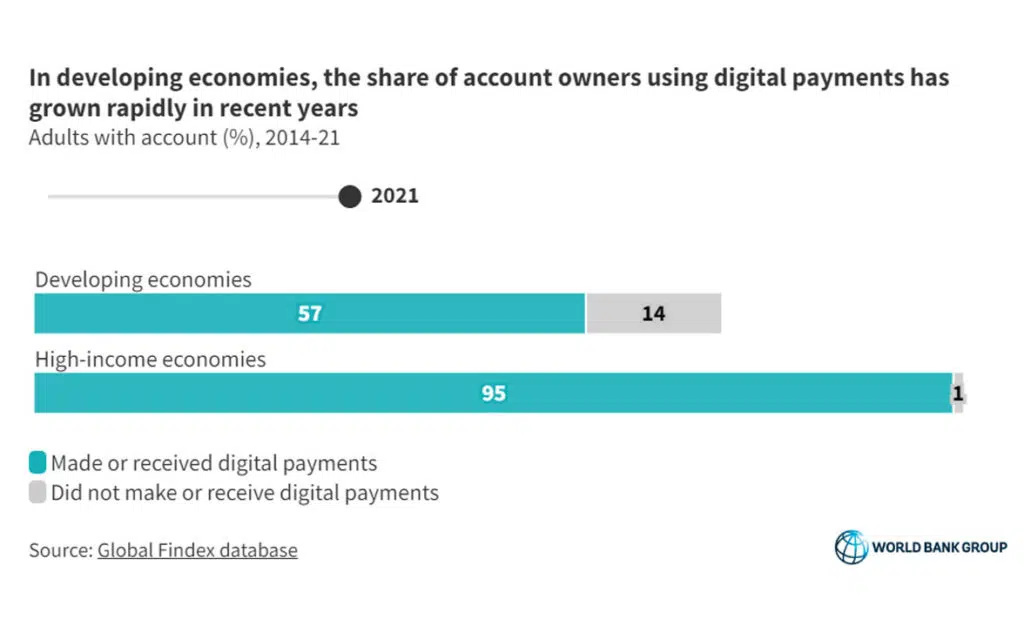
The Covid-19 pandemic has driven a “global surge” in digital payments with two-thirds of adults worldwide now making or receiving digital payments, rising from 35% in 2014 to 57% in 2021 in developing economies and from 88% in 2014 to 95% in 2021 in high-income economies, according to the World Bank’s Global Findex 2021 database.
The database also shows that, since the start of the pandemic, more than 40% of adults in developing economies other than China made in-store or online payments to merchants using a payment card, mobile phone or the internet for the first time.
More than a third of adults in these economies also used a digital payment method to pay a utility bill for the first time during the pandemic.
The growth in digital payments has been accompanied by an increase in account ownership with 76% of adults globally now having an account at a bank, another financial institution or with a mobile money provider, up from 68% in 2017 and 51% in 2011, the World Bank says.
The uptake of mobile money accounts has been particularly strong in Sub-Saharan Africa, where 33% of adults now have one compared with the 10% global average and this “has become an important enabler of financial inclusion”, according to the research.
In addition to the Covid-19 pandemic, the research identifies “receiving digital payments such as a wage payment, a government transfer or a domestic remittance” as a key driver in the uptake of digital payments and other financial services.
“In developing economies, 36% of adults received a payment into an account. Of those, 83% also reported that they made a digital payment,” the researchers say.
“Almost two-thirds of payment recipients used their account to store money, about 40% to save money and about 40% to borrow money. This finding suggests that digital inflows can pave the way for wider use of financial services.”
Regional variations
Global Findex 2021 also identifies regional variations in account ownership and usage trends, with 82% of adults in China making digital merchant payments compared with 23% in the rest of East Asia and the Pacific and 40% in Latin America and the Caribbean.
Of those making digital merchant payments, 54% in East Asia outside China did so for the first time compared with 14% in Latin America and the Caribbean, 11% in China and 10% in Europe and Central Asia.
“This edition of the Global Findex Database shows clear advances underway,” World Bank president David Malpass says.
“The share of adults making or receiving digital payments in developing economies grew from 35% in 2014 to 57% in 2021, outpacing growth in account ownership. In Sub-Saharan Africa, 39% of mobile money account holders now use them to save.
“And more than one-third of adults in developing economies who paid a utility bill from an account did so for the first time after the start of the Covid-19 pandemic — evidence of its impact on digital adoption.
“Importantly, the digital revolution is a powerful tool to improve governance. Social programmes can now channel transfers directly to their beneficiaries’ mobile phones, reducing leakage and delays. This potential became a reality during the Covid-19 crisis, helping cushion its impact on livelihoods.
“Digitalization also increases transparency as money flows from a country’s budgets to government agencies to people, reducing the scope for corruption.”
The Global Findex 2021 database is based on surveys of more than 125,000 adults in 123 economies during the Covid-19 pandemic.
Next: Visit the NFCW Expo to find new suppliers and solutions